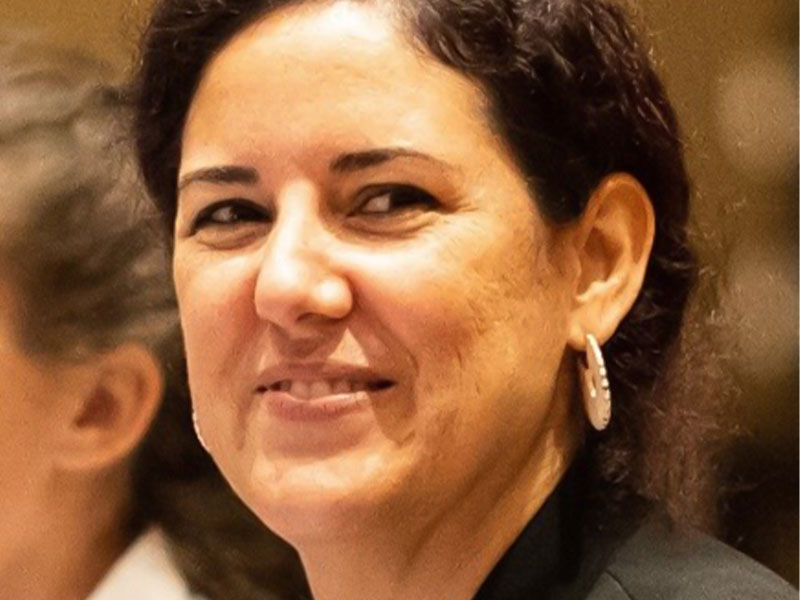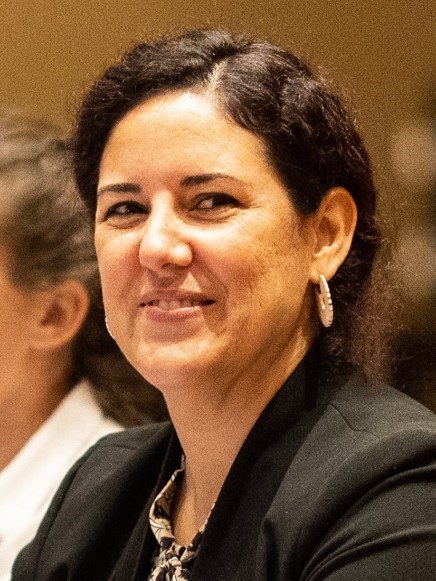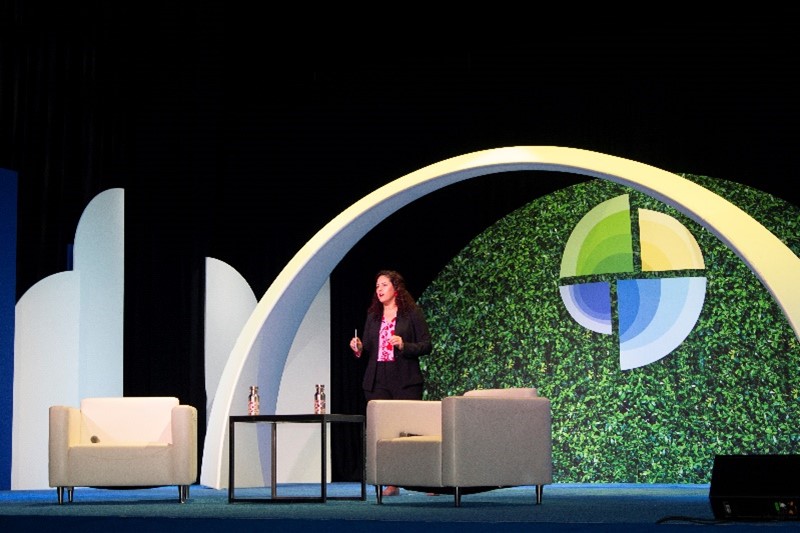-
About
-
Outcomes
-
Conference
-
Events

To achieve our global climate goals, and expand access to clean, affordable, and reliable energy, the world must accelerate both the deployment of today’s technologies and innovation of tomorrow’s solutions. A global coalition called Mission Innovation is catalyzing action and investment in clean energy research, development, and demonstration. Twenty-Four governments, seven international collaborating organizations, and dozens of experts, implementation partners and companies from around the world work together through Mission Innovation to drive clean energy technology innovation. It also participates in RD20, an R&D initiative that will ultimately invest in and support the realization of zero-emission clean energy around the world. We asked Ms. Julie Cerqueira, Mission Innovation’s Steering Committee Chair, about the coalition’s activities.

Mission Innovation (MI) was launched in response to the adoption of the historic Paris Agreement in November 2015. It is a coalition of countries working hand-in-hand with organizations around the world, including research institutions such as laboratories, that are the core membership of RD20. research intuitions such as laboratories, as is the case with RD20. The twenty-four members of Mission Innovation are Austria, Australia, Brazil, Canada, Chile, China, Denmark, Finland, France, Germany, India, Italy, Japan, the Republic of Korea, Morocco, the Netherlands, Norway, Saudi Arabia, Spain, Sweden, the United Arab Emirates, the UK, the USA, and the European Commission (on behalf of the European Union). Additionally, MI has seven collaborating organizations, including the World Bank Group, Global Covenant of Mayors for Climate and Energy, Breakthrough Energy, World Economic Forum, the International Renewable Energy Agency (IRENA), the International Energy Agency (IEA), and Mission Possible Partnership.
Mission Innovation was originally established eight years ago to increase public funding for clean energy innovation – also known as Mission Innovation’s first phase. This is described as RD&D – Research, Development and Demonstration.
Mission Innovation is made up of seven missions, which bring together countries, corporations, investors, and research institutes in high ambition alliances that support specific areas of clean energy innovation. These missions include zero-emission shipping, clean hydrogen, green powered future, carbon dioxide removal, urban transitions, net-zero industries, and integrated biorefineries. Each of these missions has a goal focused on making clean energy accessible, affordable, and attractive for all in this decade and advancing action toward the Paris Agreement. For example, the clean hydrogen mission aims to make clean hydrogen competitive by reducing its production cost to $2/kg by 2030. At present, it costs three times more than hydrogen produced by burning fossil fuels.
In addition, in line with the theme led by each initiative, the missions collaborate with organizations and countries to showcase prototypes and demonstration projects of technologies that have undergone RD&D. Technologies are developed and adapted for different regions. For example, the Hydrogen Valley Platform initiative is global collaboration and go-to platform for large-scale hydrogen flagship project developers, identifying hydrogen valleys around the world. The Clean Hydrogen Mission aims to facilitate the delivery of 100 large-scale integrated hydrogen valleys around the world by 2030.
The private sector plays an essential role in the missions. For the fuel cell industry, research associations, and consulting firms participate in the Clean Hydrogen Partnership, led by European Commission (EC).
Public institutions are investing in technology development, and incentivizing private-sector engagements; private institutions are promoting technology development together with engineers at research institutes and university officials. Mission Innovation emphasizes practical application while being deeply involved in technological innovation. Therefore, it is working with international organizations to help governments reach their goals, says Ms. Cerqueira.
Initially, Mission Innovation focused on mobilizing public resources for technological innovation, and is now focused on collaborative implementation with an eye to concrete, measurable 2030 goals.
Mission Innovation aimed to double public funding for clean energy innovation during its first five years. It tried to increase the amount by $5.8 billion every year and accumulated $18 billion over five years. During this time, Canada, Chile, Japan, the Netherlands, Norway, and the UK doubled their funding. In 2022, the organization came together for the 7th Mission Innovation and 13th Clean Energy Ministerial meeting in Pittsburgh, Pennsylvania called the “Global Clean Energy Action Forum,” hosted by the United States. Ahead of the Forum, U.S. President Biden challenged countries to come to Pittsburgh and collectively mobilized $90 billion to demonstrate clean energy technologies – the level IEA analysis found needed by 2026 to achieve net zero energy emissions globally by 2050. Thanks to the leadership of 16 economies, the coalition exceeded that goal four years early, announcing $94 billion at the Mission Innovation Ministerial meeting held in September last year.

In its first five years, Mission Innovation, governments worked with the private sector to mobilize funding that has been key to advancing breakthrough technologies. Now they are focused on transforming some of the most challenging sectors and technologies, such as deploying commercial ships that can run on zero-carbon fuels.
Rather than tackle many sectors, MI is achieving results by staying focused on the ones that have the greatest potential if we can prove they work at scale and bring costs down to be competitive with other technologies, Ms. Cerqueira says. Many countries are investing more in technological innovation and collaborating to deliver and deploy the technologies needed to achieve clean energy goals. Recently, Mission Innovation has been working closer together with the Clean Energy Ministerial. With Mission Innovation putting its resources toward clean energy RD&D the Clean Energy Ministerial builds on this momentum by supporting the deployment of proven technologies. Together, these organizations are at the heart of accelerating the process from innovation to the commercialization of clean energy technologies.
The development of zero-emission ships is an example of how these two are collaborating towards mutual goals. Clean Energy Ministerial is focusing on cross-sectoral public-private collaboration to de-risk investment in the low- and zero-emission fuel value chain and align the energy-maritime value chain. Ships account for 3% of global CO2 emissions, so it would be natural for shipowners to reconsider their ships and pay more attention to zero-emission ships. Mission Innovation is aligned with CEM’s goal to advance deployment by working to demonstrate the commercial viability of zero emission ships by 2030.
The United States is deploying over $25 billion for technology demonstrations. A priority for those investments is the deployment of hydrogen hubs- a contribution to MI’s goal of 100 hydrogen valleys. Hydrogen valleys co-located and support the deployment of projects that increase both the supply of, and demand for clean hydrogen. Most of today’s hydrogen is derived from fossil fuels, thus further demonstration of hydrogen derived from renewables, nuclear power, etc. will be key to bring down hydrogen’s life cycle emissions, making it a truly “green” fuel. Governments and the private sector have shown a lot of interest in advancing clean hydrogen production and expanding end uses because of its potential to reduce emissions from hard-to-abate sectors. There is a lot that still needs to be worked out, and the best way for the global community to innovate this important technology is by collaborating and learning from each other through platforms Mission Innovation, says Ms. Cerqueira.
RD20 promotes innovation and supports the realization of a carbon neutral society through international collaboration, and its goals align with Mission Innovation, says Ms. Cerqueira. In the next ten years, clean energy from emerging technologies will become increasingly affordable, and accessible. She says Mission Innovation will continue working through its seven missions and technical advisory group to accelerate a net-zero future around the world, and finding new opportunities to collaborate with other organizations – like RD20 – moving toward the same goal. Ms. Cerqueira said she hopes Mission Innovation’s collaboration with RD20 can continue and expand to further support our shared goals in research, development, and demonstration of clean energy technologies.
Kenji Tsuda Editor in Chief, Semiconductor Portal